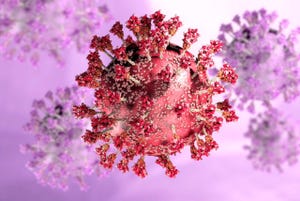3-D Printing Allows College Student to Save Infants in Kenya
August 8, 2014
A 20-year-old electrical engineering student at the University of Nairobi in Kenya has used a Makerbot 3-D printer to create a tiny vein finder for use in infants.
Alois Mbutura created the prototype while in his first year at the university, and believes it could go a long way in helping to deliver the numerous infant vaccinations needed in underdeveloped countries such as Kenya, according to an article on 3dprint.com. Recently, both the School of Health and the School of Engineering at the university partnered with Mbutura in an effort to help address the difficulty healthcare professionals encounter when locating veins in infants.
What's even more astounding is that Mbutura can produce approximately 100 of these vein-finding devices in a single day on one 3-D printer. Affordable mass production of medical devices such as these are exactly why 3-D printers are beginning to make such an impact in underdeveloped nations.
|
Mbutara can produce roughly 100 of the vein finders in a single day. |
Kenya currently ranks 52nd in infant mortality rates out of 224 established nations, losing over 40 infants out of every 1000 live births. Having devices like Mbutura's prototype readily available, could go a long way in curbing those numbers, paving the way for more vaccinations and providing easier access for intravenous needles.
The hope is that Mbutura's prototype is just the beginning in innovative medical devices crafted from 3-D printers. Currently, research is underway to develop 3-D syringes that could be mass produced and distributed in underdeveloped countries that otherwise would not have the materials or the storage space needed for life saving vaccines.
3-D printing can open up a whole new world of possibilities to countries that don't readily have access to lifesaving devices and technologies, or the materials necessary to produce them. Providing universities and hospitals with the ability to generate these devices efficiently and cost effectively, could be the first step toward elevating universal health care in underdeveloped nations.
Refresh your medical device industry knowledge at MEDevice San Diego, September 10-11, 2014. |
Kristopher Sturgis is a contributor to Qmed and MPMN.
Like what you're reading? Subscribe to our daily e-newsletter.
About the Author(s)
You May Also Like



